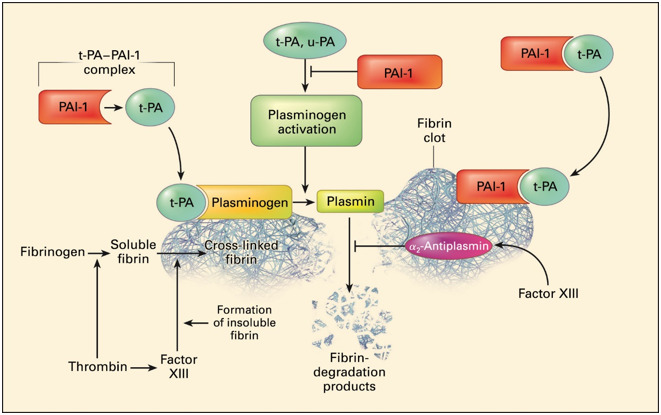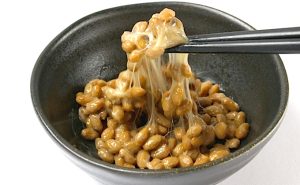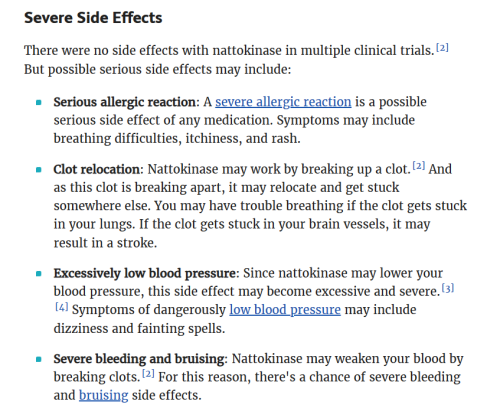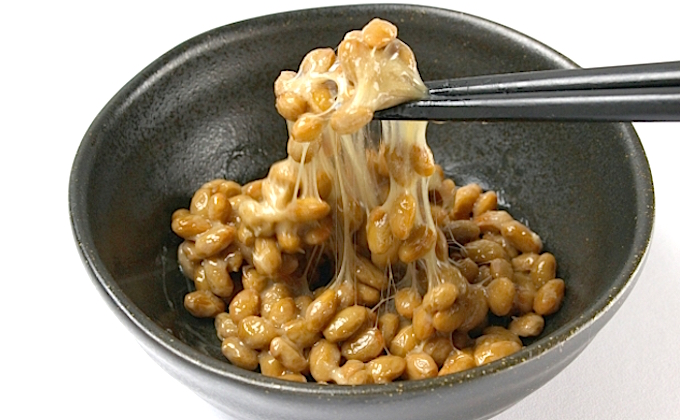@P_McCulloughMD: Nattokinase Is ‘The Only Hopeful Thing I’ve Seen’ to Get Spike Proteins Out of the Body
— The Wellness Company (@twc_health) March 8, 2023
“It was an interesting preclinical study (from Japan) but very good. It was the only agent that dissolved the spike protein but left the cells and the tissues intact.” pic.twitter.com/MgBizG04Fb
Let’s look at a thread on Twitter by Dr. Eashwarran Kohilathas (@drkohilathas) which I have copied to make it easier for you to read.
Natto is a food that has been consumed in Asian countries for more than 2000 years. It is made of soybeans fermented with Bacillus subtilis and is particularly popular in Japan.
Natto consumption is believed to be one significant contributor to the longevity and reduced cardiovascular disease of the Japanese people.
Fibrinolytics are agents able to dissolve fibrin, a fibrous protein involved in the clotting of blood. And thus, they are used to disintegrate blood clots clogging up arteries or veins, helping to improve blood flow and prevent damage to affected organs.
In 1987, it was found that natto contained a potent fibrinolytic enzyme called nattokinase. Since then, research has confirmed that nattokinase has both fibrinolytic and clot-preventing (antithrombotic) activities. (The good news is you can buy it online!)
Plasmin is a naturally occurring fibrinolytic enzyme that we all possess, and nattokinase has been found to be four times more potent than that.

Tissue plasminogen activator (tPA) is another naturally-occurring enzyme found on endothelial cells involved in the breakdown of blood clots, and it is now known that nattokinase not only degrades fibrin directly but also increases the release of tPA too.
Nattokinase also enhances the production of other clot-dissolving agents as well as inhibiting a molecule called thromboxane, which is normally involved in sticking platelets together.
Thus, nattokinase inhibits platelet aggregation, and it looks like it does this without the side effect of causing bleeding.
Research has shown that nattokinase (NK) has other beneficial activities including blood-pressure lowering, anti-atherosclerotic, cholesterol-improving, antiplatelet and neuroprotective properties too.
Clinical investigations of NK in humans are relatively limited, but have been promising. One study of 24 participants with an acute stroke, the use of nattokinase showed a clear neuroprotective effect without causing clinical signs of bleeding.
And in another study, the daily use of nattokinase at 6000 fibrinolytic units (FU), or 300 mg/day, improved the cholesterol profiles of participants as well as reducing vessel narrowing and plaque size in the carotid artery.
This property of NK was further shown in a 2022 study. Higher doses of 10800 FU/day were shown to be effective and safe, with regular exercise and the co-administration of vitamin K2 and aspirin working synergistically too.
Clots are a problem in C19 and jab-related illnesses. Clots generated in COVID-19 blood have been shown to exhibit higher density and are more resistant to breakdown compared with clots formed in severe influenza patients.
It is known that the SARS-CoV-2 spike protein causes substantial impairment of fibrinolysis as well as binding platelets and forming clots.
Interestingly in one lab study nattokinase was shown the ability to degrade spike proteins.
Another showed NK having the ability to inhibit viral infections including SARS-CoV-2 in vitro.
Is it safe? As nattokinase modulates our clotting systems, there is always a worry that it increases our risk of bleeding disorders. These worries may be unwarranted, as long as it isn’t use alongside other anti-clotting agents.
There is a long history of the use of natto and purified nattokinase in the diet in Asian countries, especially Japan, and it has been shown that there is no concern for toxicity when adults take 1,000–14,000 FU daily.
Plus, no toxic side effects have been observed in rats using significantly higher doses of 22,000 FU/kg/day, equivalent to 1.43 million FU daily in humans.
And in human volunteers, no adverse effects were observed following 4 weeks of nattokinase consumption at a daily dose of 10 mg/kg for 28 days.

An increased risk of bleeding events may occur if NK is taken with aspirin or if the person is already prone to bleeding. There is one report of a patient who was concurrently using aspirin and NK (400 mg daily) and experienced an acute brain bleed.
Instead of supplementing with nattokinase, some may opt to eat natto, not only for its specific flavour and aroma but also due to the fact it contains a range of essential nutrients and bioactive compounds other than just nattokinase. These include vitamin K2, soybean isoflavone, γ-polyglutamic acid and biogenic amines. Some of these may potentiate nattokinase’s activities.

More here: https://www.callingouttheshots.xyz
Clots Dissolved In Days, Low Prevalence of Heart Attacks Associated With Popular Japanese Food@drcole12: “I’ve had colleagues who have ended up with clots after long travels … and I said, ‘Have you tried nattokinase?’ In a day or two later, gosh, their clot is dissolved.” pic.twitter.com/5U3kHNCTwd
— The Vigilant Fox 🦊 (@VigilantFox) March 29, 2023

